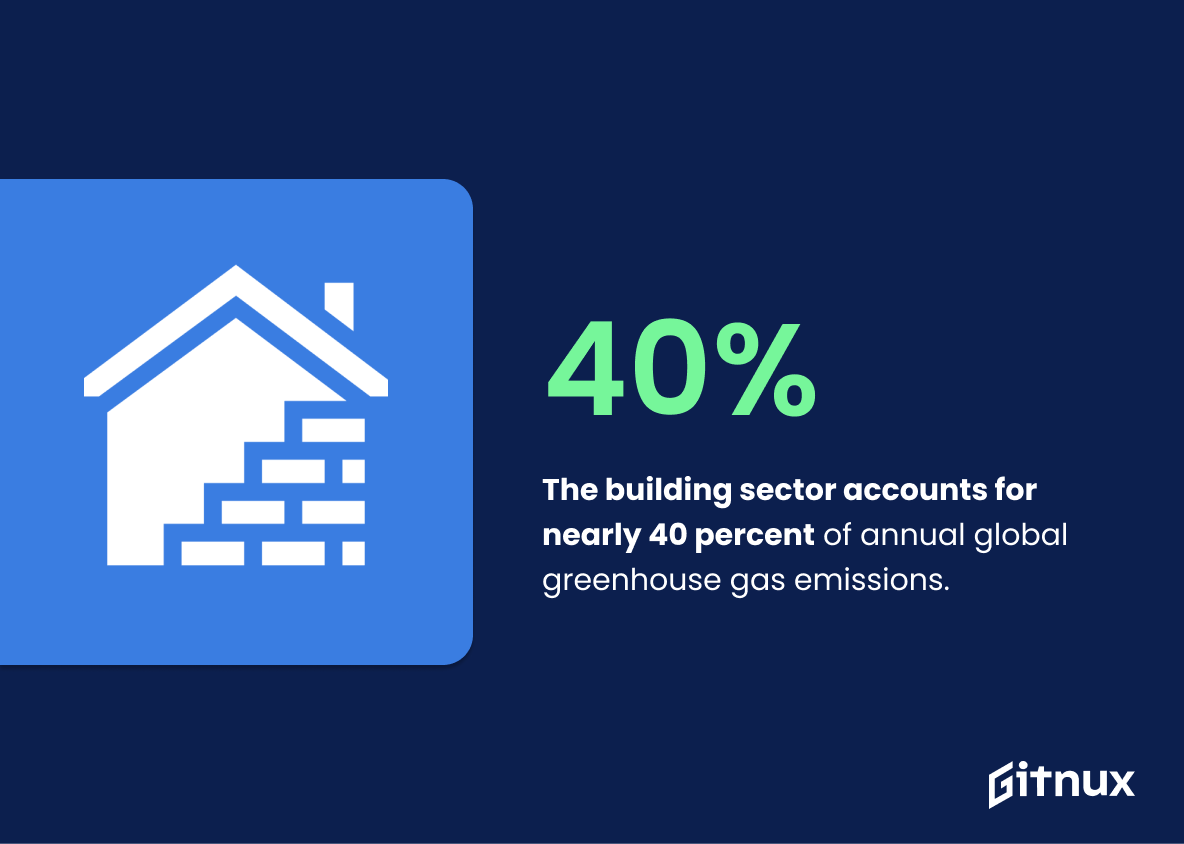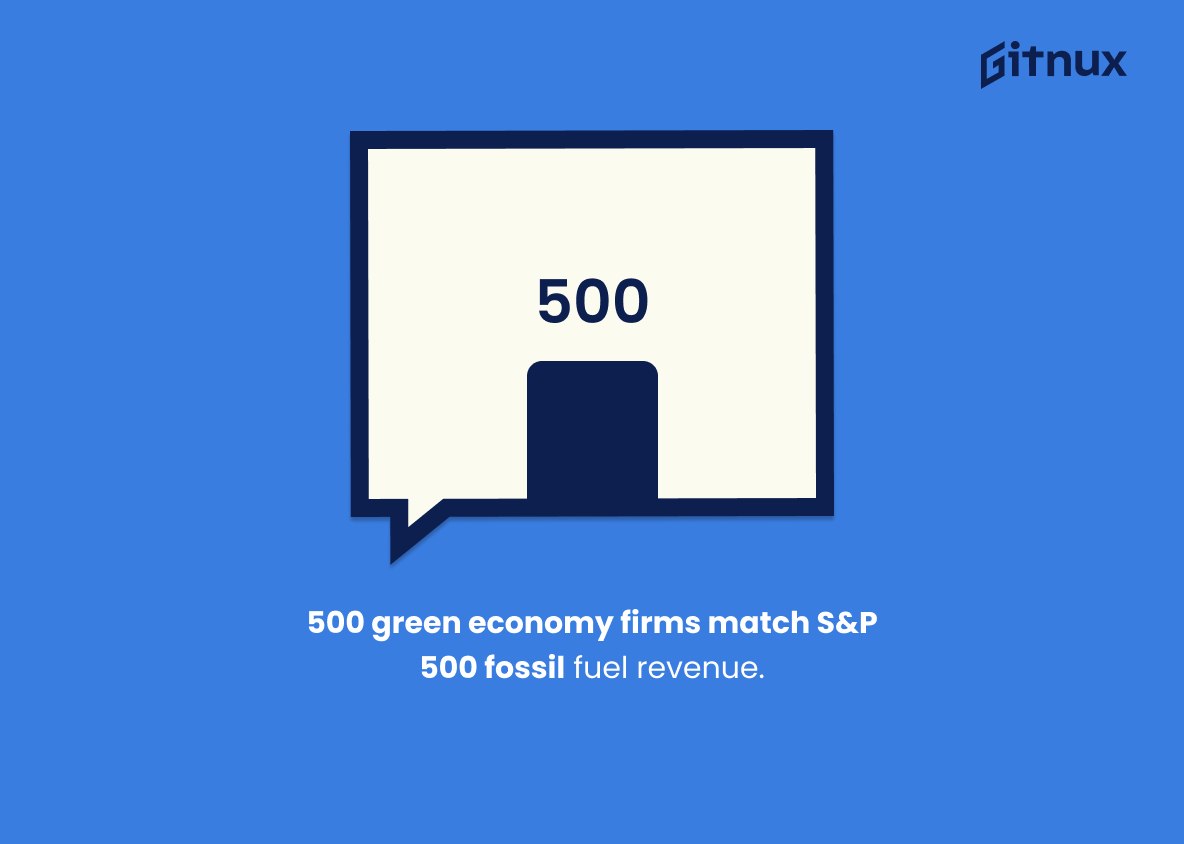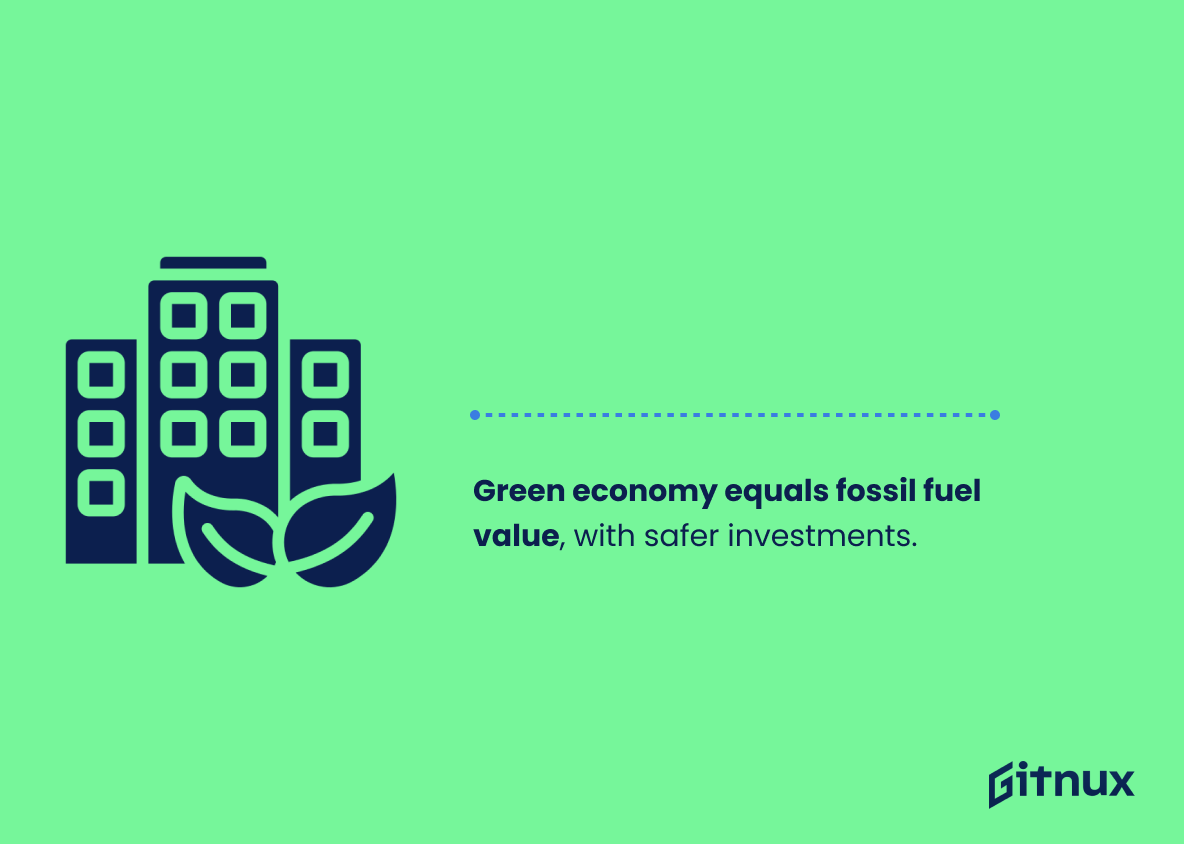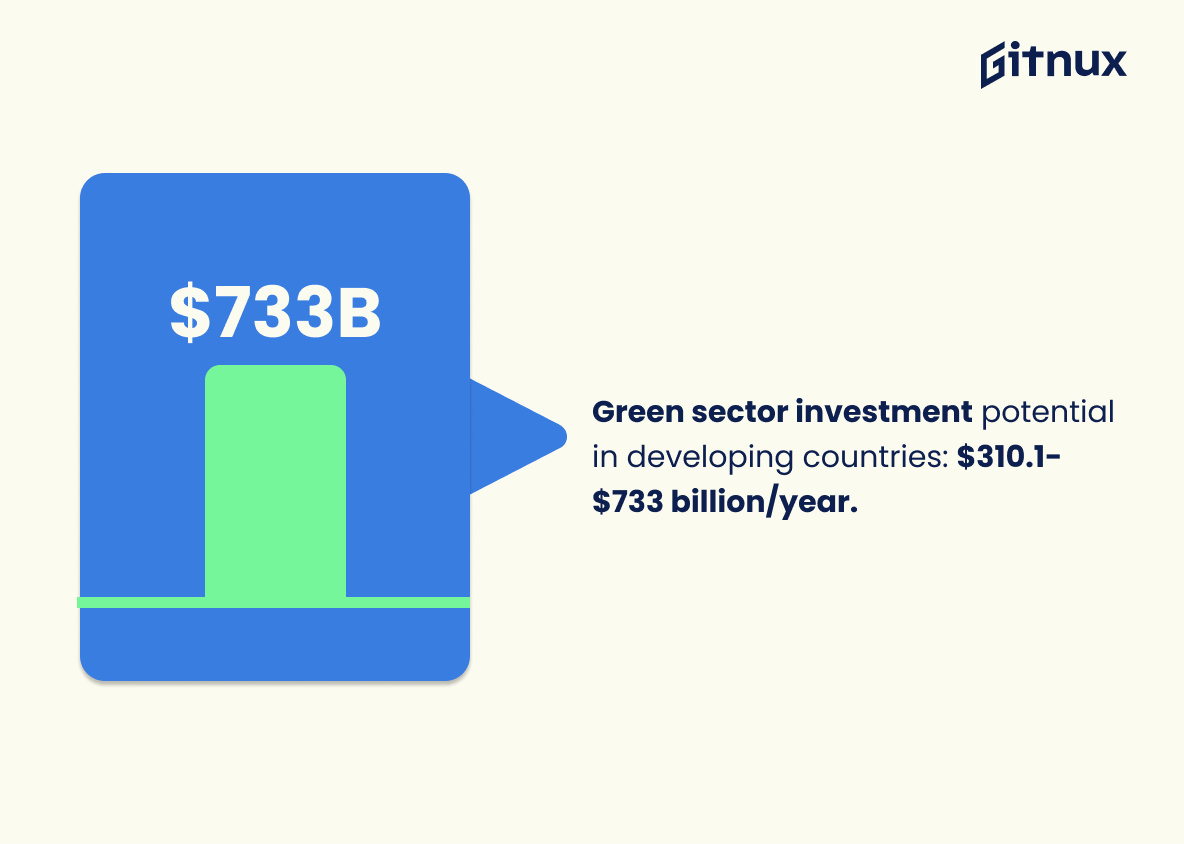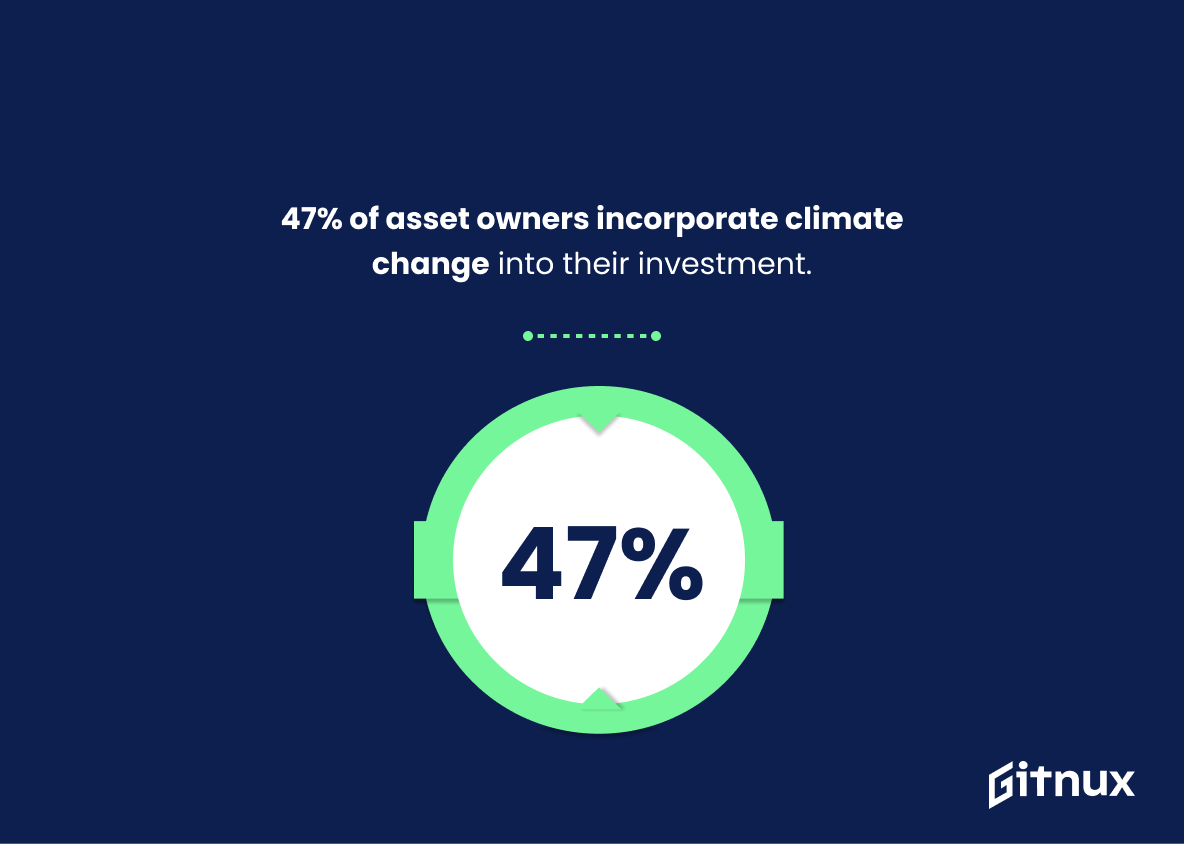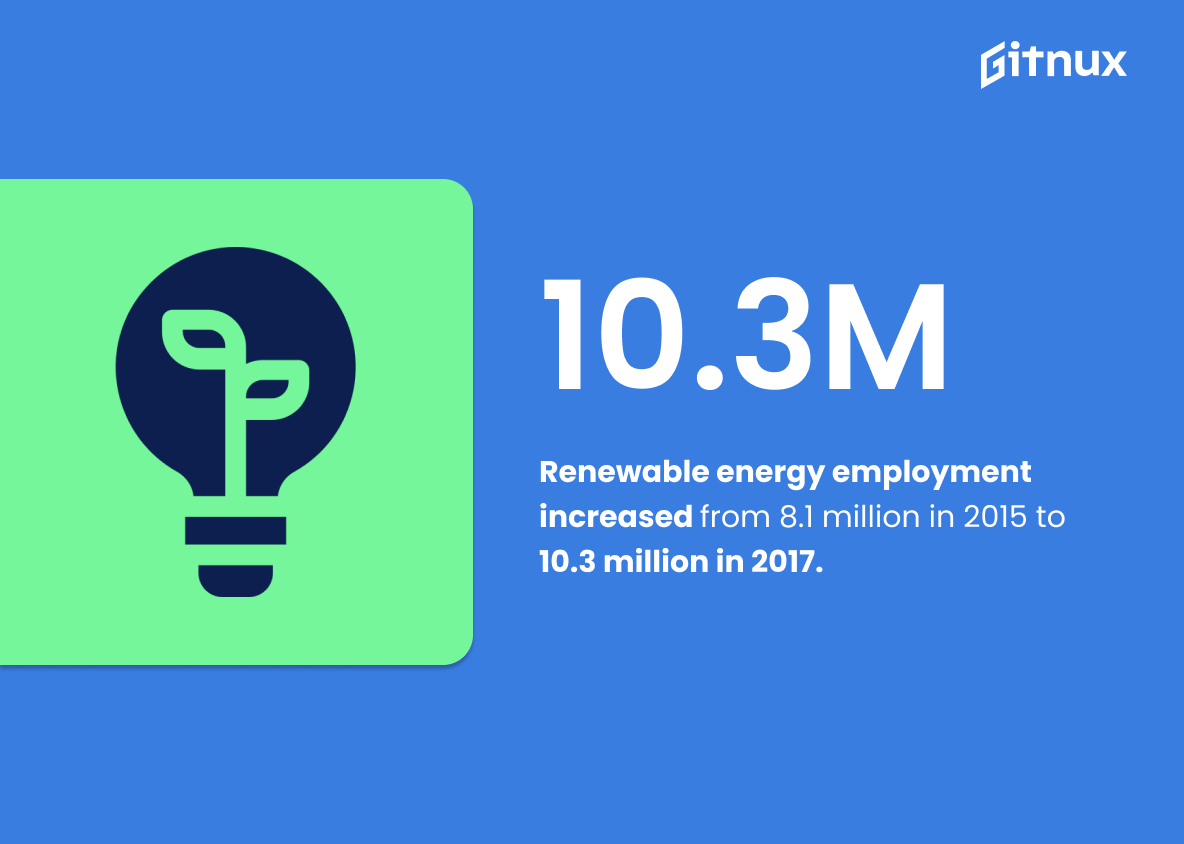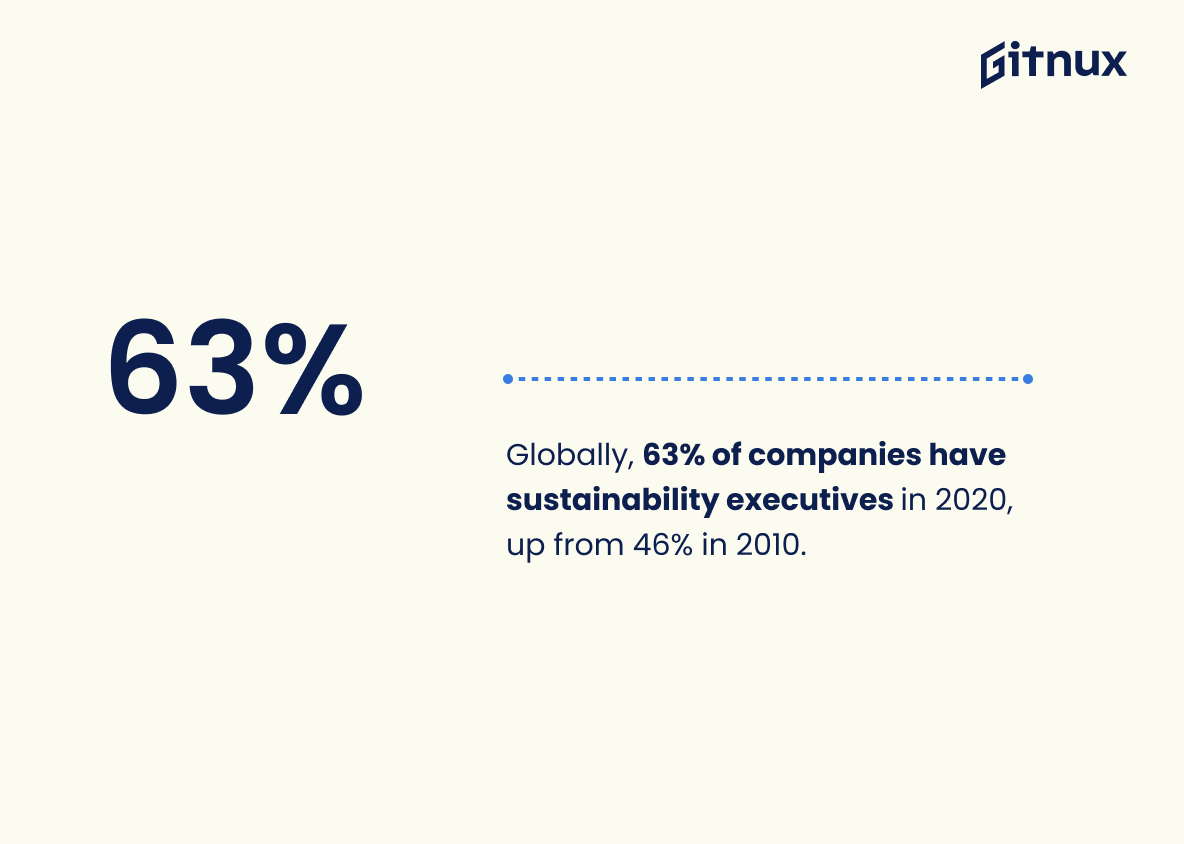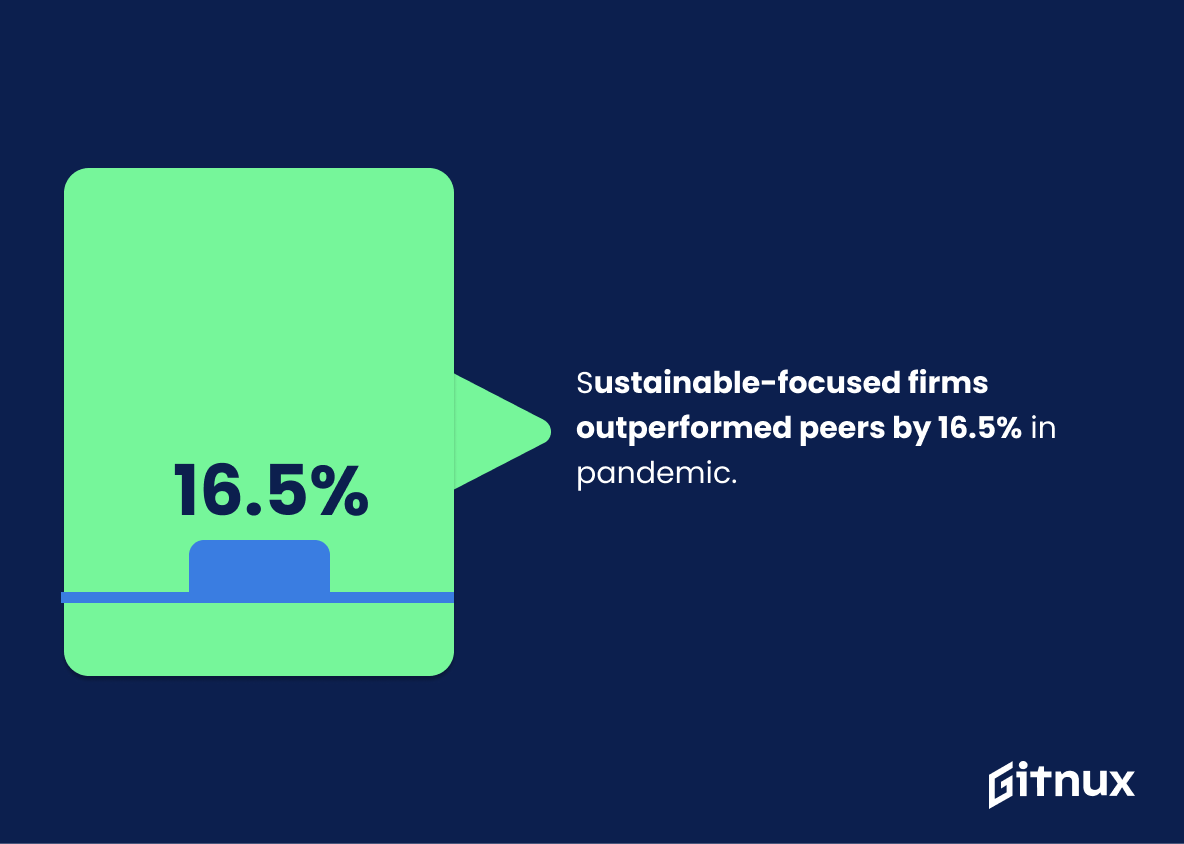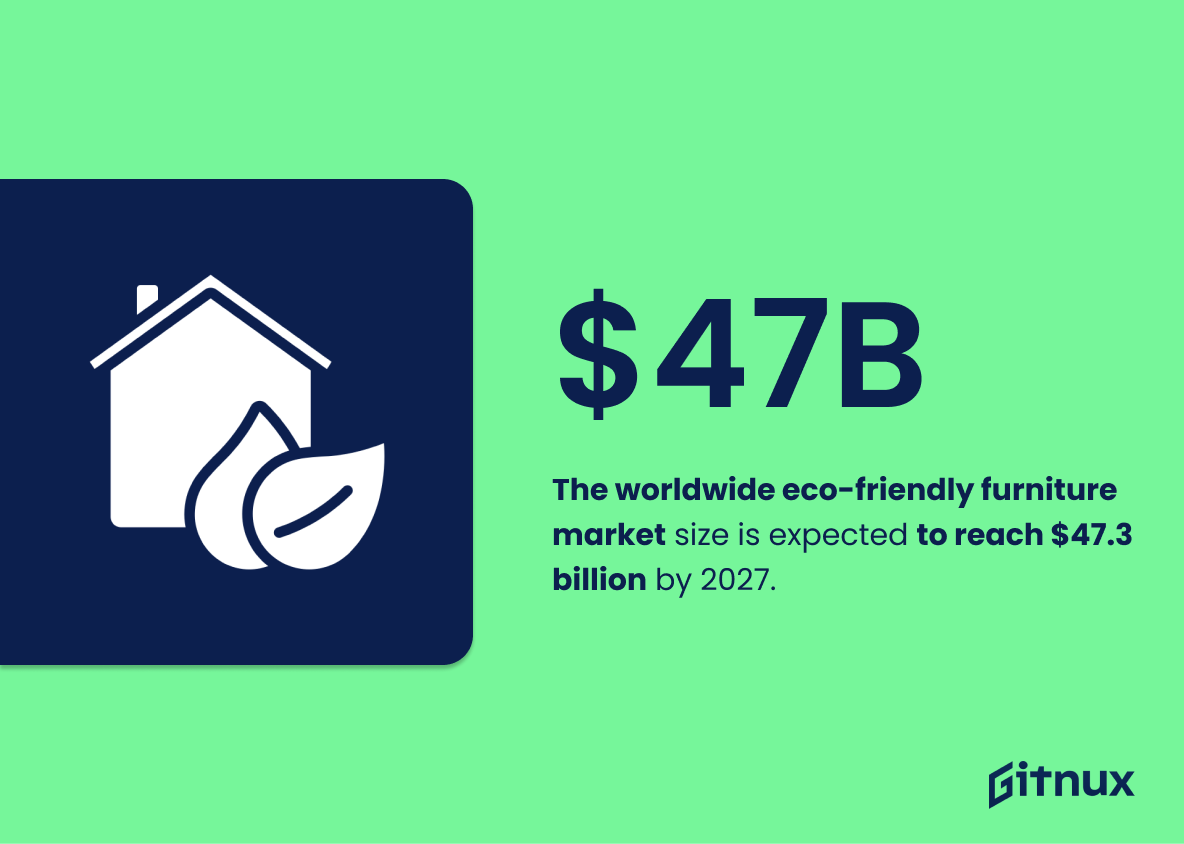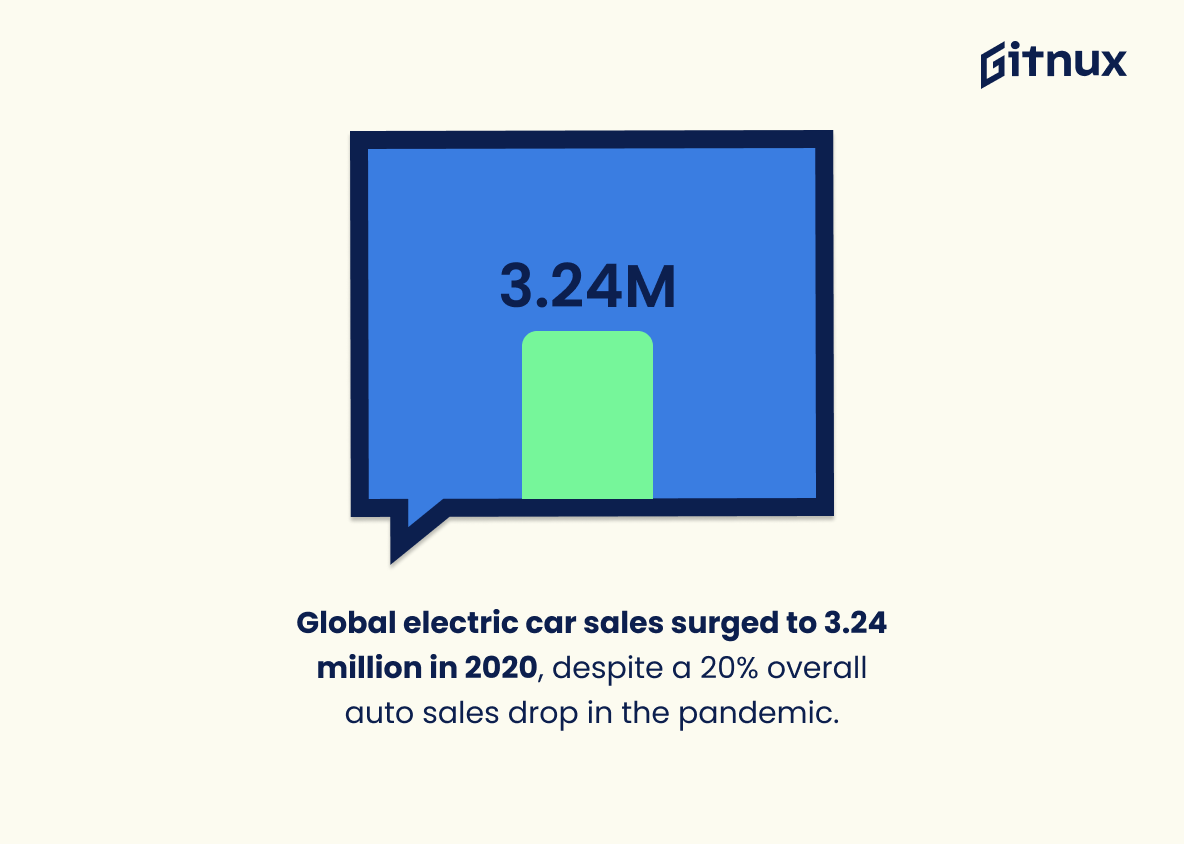In an era where green practices are not just a trend, but a global necessity, understanding the sustainability industry is quite pertinent. This expanding sector, committed to minimizing human impact on the environment, is creating remarkable transformations in various aspects of society. To provide a comprehensive look at this profound evolution, we delve into the heart of sustainability industry statistics. Knowing these figures paints a detailed picture of the current landscape and the future trajectory of sustainability. Join us as we unravel how businesses are pioneering change towards a more sustainable world, the economic gains surrounding this industry, and how these practices are shaping our global communities.
The Latest Sustainability Industry Statistics Unveiled
The building sector accounts for nearly 40 percent of annual global greenhouse gas emissions.
Shining a spotlight on the footprint of the construction industry brings a new perspective when delving into Sustainability Industry Statistics. Hence the assertion, the building sector is culpable for almost 40 percent of annual global greenhouse gas emissions, is critical. Providing a stark illustration of the construction industry’s impact, this statistic underscores the pivotal role the sector plays in either exacerbating or combating global climate change. Embodying a call to action, it gives clear guidance to where strategic investment and innovation need to occur if we are to slow down or reverse current trends. It puts a heavy responsibility on the shoulders of those involved in the sustainability industry, challenging them to prioritize solutions that target the building sector.
500 companies whose revenue is considered to be part of the green economy now match those of fossil fuel in the S&P 500.
Excavating the implications of this astonishing statistic, it lays the groundwork for a radical transformation in our global economy, highlighting a thriving undercurrent in the Sustainability Industry. The financial muscle of 500 companies, once relegated to the niche ‘green’ paradigm, has now levelled up to those heavyweights in the fossil fuel sector within the S&P 500. These compelling numerical facts not only imply a competitive edge for green businesses, but they also mark a monumental shift in the economic landscape.
Unveiling prosperity in the sustainability sector suggests an upward economic trajectory of environmentally conscious commerce. It reveals a growing investor appetite for companies prioritizing sustainable practice reflecting a paradigm shift in the perception of what constitutes long-term business value. This shift represents an optimistic financial forecast for companies already operating within the sustainability sector, and serves as an irresistible siren’s call for those considering throwing their hat into the ring.
The statistic also underscores a change in customer habits and preferences. Increasingly, consumers are voting with their dollars, gravitating towards companies that prioritize environmental stewardship. The escalating revenues of green companies are a testimony to this trend.
In conclusion, this statistic gestures towards the eventual reimagining of the entire economic narrative, shining a beacon on the green economy as an emerging financial titan. It subtly underlines emerging narratives for a greener, just economy, shaping and measuring human progress in a way that aligns societal goals with planet’s limitations.
The green economy is worth as much as the fossil fuel sector and offers more significant and safe investment opportunities.
Peeling back the curtain on the economic might of the green economy, we discover a treasure trove akin to that of the fossil fuel sector. This shared value not only equals, but in many ways, outshines its fossil counterpart, particularly in the realm of investment opportunities. Green investments play the role of a sturdy vessel, sailing the seas of financial markets with greater safety and considerable potential for growth.
In the grand theater of sustainability industry statistics, this data point takes center stage. It unveils a pivotal narrative about the transformation of our global economy. Painted in hues of green rather than black gold, it challenges conventions about profitability and environmental consciousness, insisting both can coexist. As such, it creates a sense of urgency and opportunity for potential investors perusing the sustainable stage, hinting at untapped wealth nestled inside the green economy’s verdant folds.
The total potential for small enterprise investment in “green” sectors in developing countries is between $310.1 and $733 billion per year.
Painting a vivid picture with numbers, the projected investment capability in “green” sectors for small enterprises in developing countries – amounting to an astounding $310.1 to $733 billion annually – underlines the enormous economic potential that sustainable business practices hold. Within the mammoth edifice of global economies, developing countries could harbor pivotal roles in propelling the sustainability wheel.
Given the growing urgency to embrace sustainability, this eye-catching figure illuminates the potential scale of the green revolution within these burgeoning economies. Moreover, through the lens of sustainability industry statistics, this intriguing figure reinforces how marrying economic growth with environmental consciousness is not only feasible, but potentially highly profitable.
Furthermore, by focusing on the capacity of small-scale enterprises, this significant statistic stokes the embers of the entrepreneurial spirit, demonstrating that even these modest ventures can scratch more than just the surface of the sustainability sector. They indeed, can initiate ripple effects that may potentially spread across the economic fabric of developing nations – making sustainability an integral thread.
In this way, it could be said that this statistic unveils an untapped vein of green gold within the sphere of small enterprises in developing countries – illuminating pathways for an economically, environmentally, and socially rewarding future.
47% of asset owners incorporate climate change into their investment.
Undeniably, the revelation that almost half of asset owners now integrate climate change considerations into their investment choices illustrates a highly significant shift in the financial landscape. This remarkable trend underscores the rapidly evolving perception of sustainability within the market, highlighting its transformation from a ‘nice-to-have’ to a central pillar of sound investment strategy.
Moreover, this statistic draws a promising picture where prudent investors are progressively acknowledging the economic implications of climate change. Such a trend undoubtedly adds a compelling dimension to the discourse on Sustainability Industry Statistics — indicating a direct correlation between environmentally considerate behaviour and business profitability, thus marrying ethics with economics.
In essence, this statistic brings out the emerging narrative of sustainable finance, setting the stage for what’s likely to shape the future of investment.
Renewable energy employment increased from 8.1 million in 2015 to 10.3 million in 2017.
The upswing from 8.1 million to 10.3 million renewable energy jobs between 2015 and 2017 adds credence to the transformational power of the sustainability industry. This upward trend not only sheds light on the burgeoning acceptance and adoption of environmentally friendly energy options worldwide but also highlights the influential role this burgeoning sector plays in creating economic opportunities. These figures underscore the dynamic potential that lies within this green sector, merging environmental and economic movements in a way that reinforces the importance and viability of sustainable living and working practices. Ultimately, this growth narrative serves as a testament to the health and vitality of the sustainability sector, providing a compelling argument for its continued investment and expansion.
Businesses can unlock $12 trillion in economic opportunities by aligning their strategies with the UN Sustainable Development Goals (SDGs).
Imagine the staggering potential of $12 trillion in economic opportunities. That is the monumental impact businesses can have by simply aligning their strategies with the United Nations Sustainable Development Goals (SDGs). In the narrative of sustainability industry statistics, this figure isn’t just about the financial gains. It represents an intersection where environmental responsibility meets tangible economic growth.
Peeling back the layers, this statistic shows us the untapped potential that lies within our business models, strategies and corporate decisions. It challenges businesses to refurbish their mission, inviting them to be part of a transformative economic shift – one that drives prosperity while safeguarding our planet.
Furthermore, this statistic underscores the value of attuning businesses to the SDGs. It suggests a two-pronged payoff – lucrative economic returns and the invaluable contribution to global sustainability efforts. Think of it as a dual non-negotiable return on investment. The more closely businesses align with the SDGs, the closer we all get to realizing an economy that thrives on sustainability.
In essence, moving the needle from business-as-usual to business-for-sustainability could be a decisive game changer, as encapsulated by the colossal figure of $12 trillion. So, in the world of sustainability industry statistics, this figure signifies far more than dollar signs – it underlines the way we can transform business profitability into global sustainability profitability.
Globally, 63% of companies have sustainability executives in 2020, up from 46% in 2010.
The leap from 46% to 63% in a span of ten years is not just mere numbers, it paints a vivid narrative of the evolving business landscape. Just decode this telling statistic: the percentage of companies worldwide with sustainability executives hit 63% milestone in 2020, from a modest 46% in 2010.
Now, why is this significant for our Sustainability Industry Statistics blog post? Well, it punctuates the intensifying global emphasis on sustainability and green practices in corporate strategy. Businesses are more than ever acknowledging the pressing need to establish a dedicated executive role for sustainability, a clear departure from their previous practices.
The rise in proportion signals a leap towards business sustainability. It means more companies are making profound commitments towards environmental conservation, ethical labor practices, and long-term value creation. This transformation, beautifully captured in the numbers, underpins the invaluable role statistical insights play in revealing global trends and the position of sustainability in today’s corporate epoch.
Companies that prioritise sustainability outperformed their peers in the stock market by 16.5% during the Covid-19 pandemic.
Painting a vivid picture, this statistic thrusts into the spotlight the economic worth of sustainability amid global challenges such as the Covid-19 pandemic. It whispers to readers that sustainability is not merely a noble gesture towards the environment but a strategic business lever, giving firms a competitive advantage. Amid the bleak landscape of the pandemic, companies championing sustainability emerged as resilient players, soaring ahead by a marked 16.5% in the stock market compared to their peers. Therein lies the true strength of sustainable business – it flexes its muscles when times are tough, bolstering financial performance, strengthening stakeholder trust, and reinforcing crisis resilience. This statistic grants the Sustainability Industry Statistics blog post a compelling, quantifiable proof that investing in sustainability isn’t just about doing good, but also about improving business performance and shareholder value. It illuminates the path for forward-thinking companies, beckoning them towards a proactive, strategic, and winning commitment to sustainability.
The global green packaging market size is projected to grow from $174.7 billion in 2020 to $297.1 billion in 2025.
The surge in the global green packaging market size, from a robust $174.7 billion in 2020 to a whopping $297.1 billion in 2025, serves as a powerful testament to the burgeoning influence of sustainability in our world. Woven into this growth trajectory is a compelling narrative of rising global consciousness, changing consumer behavior, and a resilient industry adapting to our planet’s needs. This statistic, wrapped in layers of environmental responsibility, is proof positive of the hefty economic weight the green revolution carries. It subtly heralds the way forward for sustainability-oriented enterprises, offering a firm affirmation of their significance. Like a beacon, it guides the narrative of our blog post towards emphasizing the immense promise the Sustainability Industry holds for businesses, consumers, and more importantly, our planet.
The worldwide eco-friendly furniture market size is expected to reach $47.3 billion by 2027.
When delving into the intriguing realm of Sustainability Industry Statistics, one cannot overlook the noteworthy projection – a vibrant leap of the worldwide eco-friendly furniture sector to a staggering $47.3 billion by 2027. Quite an impressive paradigm of growth, isn’t it?
This statistical emblem serves as a powerful testament to the gushing tide of consumer shifts toward sustainability – developing an increasing appetite for eco-friendly products while making a conscious departure from the traditional, non-sustainable materials. It elucidates the growing momentum of consciousness toward an eco-friendlier planet in myriad consumer markets – a pivotal movement encouraging industries to rethink their production and operational strategies toward greener avenues.
Moreover, it underscores the strength and profitability of the ‘green’ sector, debunking the myth that sustainable practices are synonymous with higher costs and lesser profits. This projected explosive growth is substantial evidence that the sustainability industry is not only here to stay but also poised to surge.
So, as we navigate the intricate labyrinth of sustainability industry statistics, such predictions offer profound insights into international market trends, shaping the forward-thinking strategies of businesses worldwide. It’s an environmental revolution stemming from our living rooms, with the humble, yet powerful, eco-friendly furniture leading the charge.
Worldwide sales of electric cars accelerated fast in 2020 to 3.24 million, even though overall car sales slumped by a fifth during the coronavirus pandemic.
The revelation that global sales of electric vehicles surged rapidly to 3.24 million in 2020, amidst a general auto industry downturn during the pandemic, brings out a crucial point in the narrative of sustainability industry dynamics. Undoubtedly, this number reflects the progressive shift in market preference towards more ecologically responsible alternatives. It demonstrates an enlightened consumer inclination towards green technology, debunking the fatalistic view that sustainability remains secondary in periods of adversity. The statistic isn’t merely figures and percentages, it’s a testament to the accelerating growth of sustainability-oriented industries, encouraging stakeholders to invest more in the sector, react to evolving consumer behaviors, and contribute to a healthier planet.
In 2020, investors placed over $51 billion into mutual funds and exchange-traded funds that practice ESG (Environmental, Social, and Corporate Governance) principles.
Riding the wave of sustainability, the staggering sum of $51 billion channeled into ESG-centric mutual funds and exchange-traded funds in 2020 underscores a powerful shift in global investment trends. This figure serves as a testament to investors’ escalating consciousness towards Environmental, Social, and Corporate Governance principles, morphing these elements into essential aspects of investment decisions. Furthermore, this surge in ESG investments paints a broader picture of the sustainability industry’s burgeoning growth, reflecting its potential and increasing importance in shaping a future economy where sustainability is an integral trait and not merely an optional extra.
Conclusion
In an era that is increasingly concerned with its ecological footprint, the sustainability industry is proving itself to be more than just a trend. The various sustainability industry statistics we’ve explored in this blog post underpin the necessity and growth of sustainable practices in businesses worldwide. As consumers continue to become more environmentally conscious, businesses that incorporate sustainability into their operations can not only help to preserve the environment but also offer immense opportunities for economic growth and innovation. Embracing sustainability is no longer an option but a vital strategy for anyone seeking to ensure profitability and relevance in the years ahead. Together, we can leverage these powerful trends to create a greener, healthier and more sustainable future.
References
0. – https://www.www.weforum.org
1. – https://www.www.irena.org
2. – https://www.www.forbes.com
3. – https://www.www.worldgbc.org
4. – https://www.www.greenbiz.com
5. – https://www.www.packworld.com
6. – https://www.www.ft.com
7. – https://www.www.unpri.org
8. – https://www.www.iea.org
9. – https://www.www.un.org
10. – https://www.www.morningstar.com
11. – https://www.www.ifc.org
12. – https://www.www.gminsights.com
